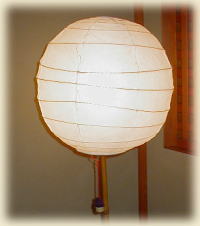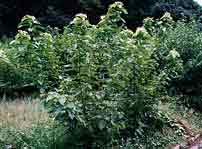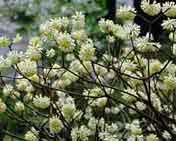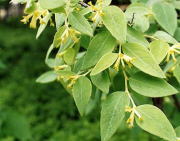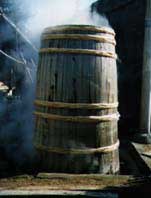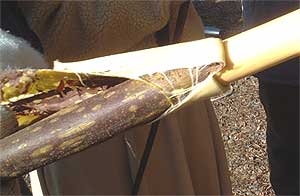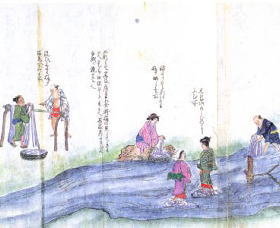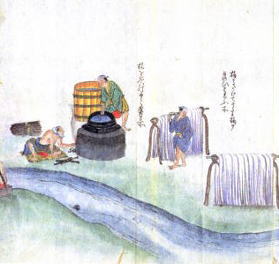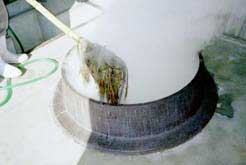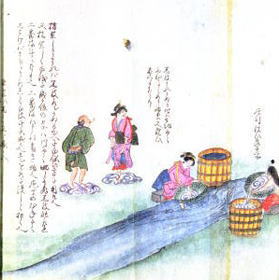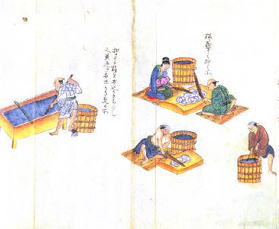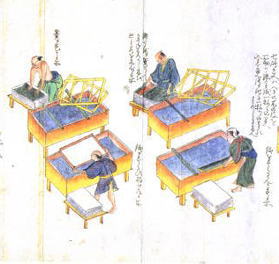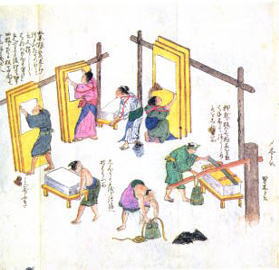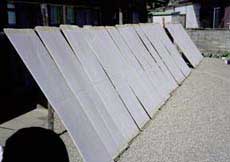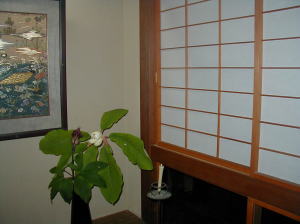|
||||||||||||||||||||||||||||||||
Japanese Paper |
||||||||||||||||||||||||||||||||
| Do you like Japanese paper? It is soft, strong, and beautiful. Traditional Japanese houses are built with woods and paper, roughly speaking. In Edo Period, until about two hundred years ago, one of the main products of this district was paper. I would like to show you a book (scroll shaped) written in 1784 about the products of Karatsu. In this scroll, the author added many illustrations to describe the details. They are quite interesting, and I hope you will enjoy. I will mix some photos to explain you more clearly about the making of Japanese paper. |
||||||||||||||||||||||||||||||||
|
||||||||||||||||||||||||||||||||
Wood-and-paper houses are good for your health, and also good for your nerves. Outside of the paper windows, there are glass windows. But in old days, there was no glass. At night, wooden doors were pulled out to protect the house, but in daytime even in winter, paper was the only screen to guard against the cold winds. People were more strong then. Earth was safer then. Thank you for your visiting this page. I hope I will see you next month again. |
||||||||||||||||||||||||||||||||
|
||||||||||||||||||||||||||||||||

